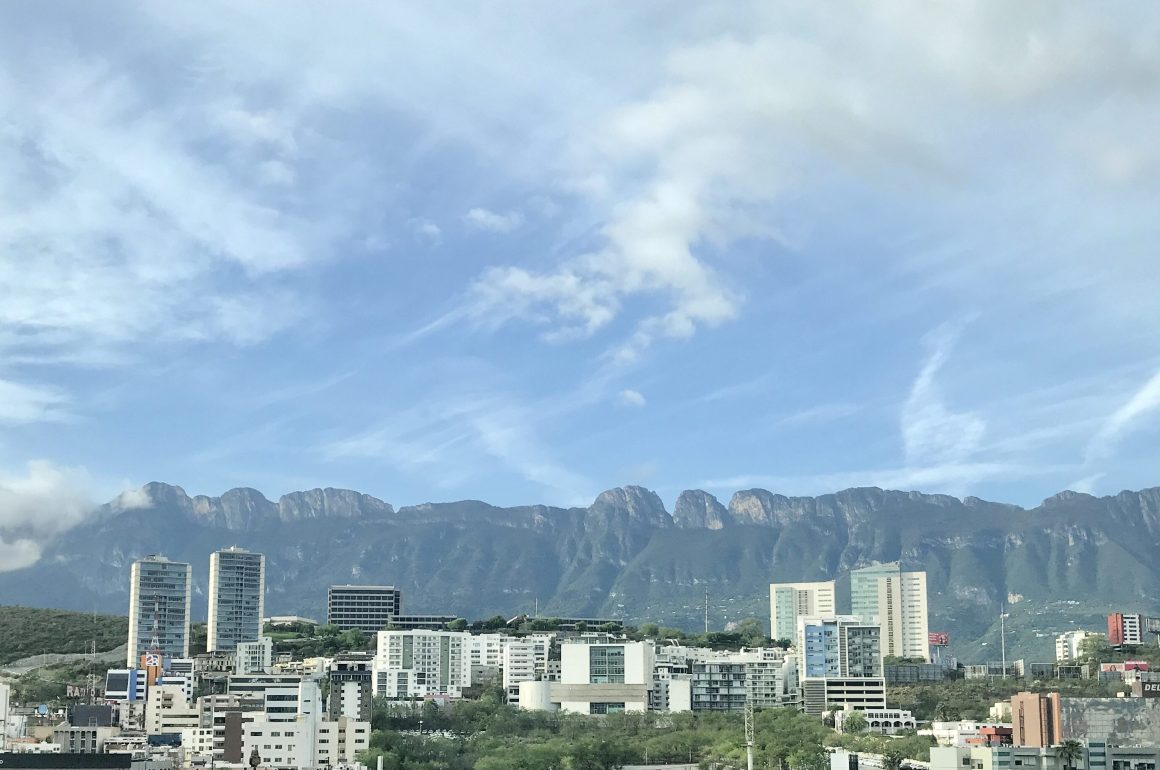
My company has an office in Monterrey so my trip wasn’t the first time to this industrial city, nor will it be the last. My previous post on birding here has received some criticism – apparently I was too harsh on the place. Now, in early March, the city showed itself from its best side with clear skies and air pollution levels so low that only small children had to stay indoors. Butt-ugly no more?
While enjoying my farewell Portuguese coffee and pastel de nata at the Lisbon airport and studying up on identification I considered the planning of my two-week trip to the Americas. True to my own recipe I would arrive a day or two early to go birding. I’d go with Mexican birding buddy Mau, guided by Kingfisher Birding who also provided the bird pictures. Our destination: four inland reservoirs and the surrounding scrubland.
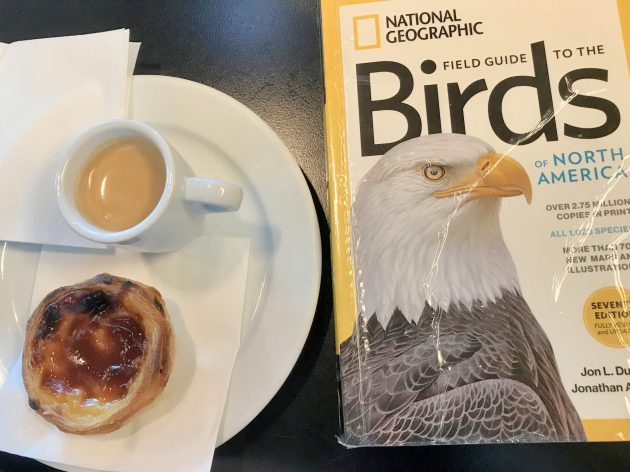
First stop: the Presa El Águila. The reservoir has been furnished with picnic areas and amenities. The main recreational activity is angling. Fishing with explosives has been explicitly forbidden as a helpful sign informed. It’s common knowledge such signs are historical indicators: some idiot tried this at least once! We left from Monterrey at 5:00 hrs and arrived on the lakeshore with the sun peeking over the horizon. With the Sierra Los Picachos in the distance instead of the more familiar Sierra Madre Oriental, the tranquillity and clean air let you know you are far away from the city.
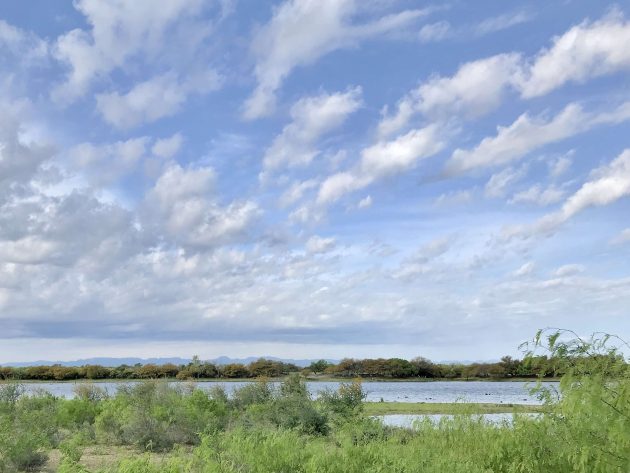
The wind was strong and cold but had concentrated the birds in the downwind part of the lake. Drowned trees provide perching opportunities and there are shallow and exposed areas and underwater vegetation in this part of the lake. It may just be the feeding opportunities that had drawn in the birds, not the wind. Or maybe we were just projecting our misery on the birds. With the sun gaining in strength and out of the wind we were soon quite comfortable. The birds warmed us too. There was a large raft of hundreds of American Coot, an American White Pelican and lots of duck species.
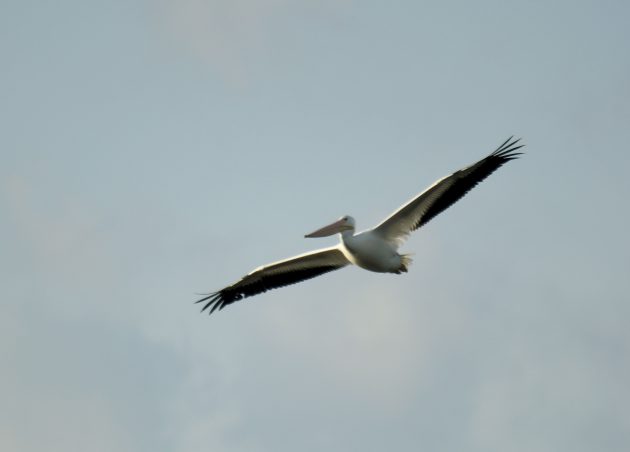
I will not name all ducks, but Bufflehead and Canvasback were lifers so they deserve a call-out.
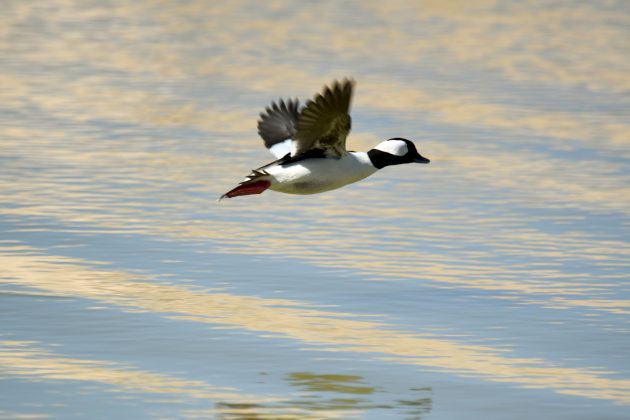
A group of about 15 Least Sandpipers was feeding in the shallows. They were moving in our direction and seemed to be oblivious of our presence. Quietly we waited for them to get closer and closer and closer still, and then, bang! Sandpipers up in the air and a general panic among the coots and ducks. A Merlin had just attempted to grab breakfast before our very eyes… She missed and while we were happy for the sandpipers – they are very pretty – the excitement we felt was for the falcon. What a spectacle. Hearts racing and tears of emotion welling up in our eyes!
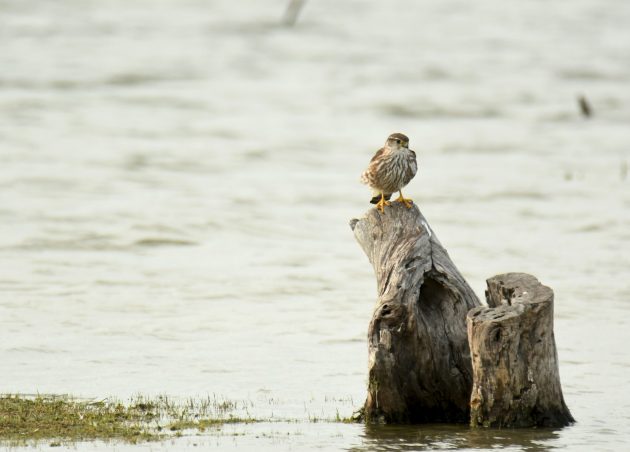
The excitement was far from over. Next we witnessed an Osprey through those same watery eyes. The bird hovered, plunged and caught a large fish. The wind made it hard for it to settle so we were treated to some fly-bys. Sometimes real life is better than any Sir David Attenborough documentary. Only a cynic would attribute our tears to the cold wind.
We checked out the shrubs for songbirds while returning to the car and were rewarded with a displaying Red-winged Blackbird. A Loggerhead Shrike bade us farewell and we headed out to the next destination. Driving slowly out, through shrubland and acacia woodland, we scanned for birds. We spotted a Black-throated Sparrow …
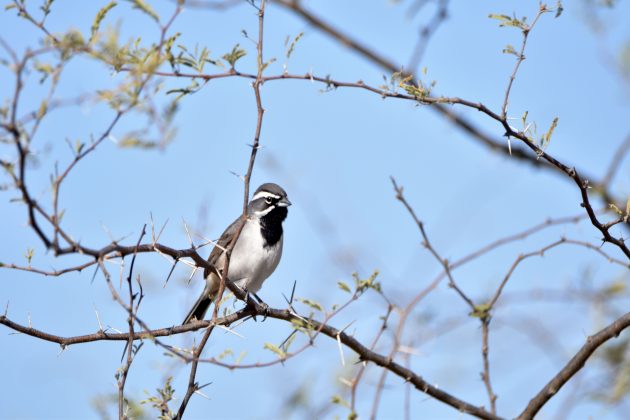
… and then our guides heard Cassin’s Sparrow calling. We stopped. I got out, stretched and looked an Eastern Screech-Owl straight into its gorgeous eyes. Was it the small size, the very large eyes, or the cute ear tufts? I don’t know but I stood mesmerised, drowning in those eyes and feeling remarkably “zen”. I think I’m in love with an owl.
Next stop: Presa Agualeguas. The emotional high of the owl was never going to give this lake a fair chance but even so I would say this spot was the least attractive of the day. Far fewer birds and an uninteresting landscape. A Great White Egret plunge diving for a fish still made the stop worthwhile but we didn’t stay long.
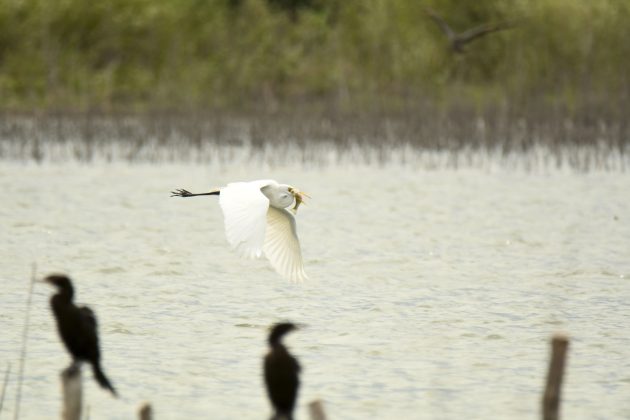
We then checked the Presa El Nogalito for one bird species in particular. The reservoir is surrounded by high cliffs with only a single shallow part with vegetation and the possibility for birds to forage. And foraging they did, about 200 specimens of the species we were after: Sandhill Cranes.
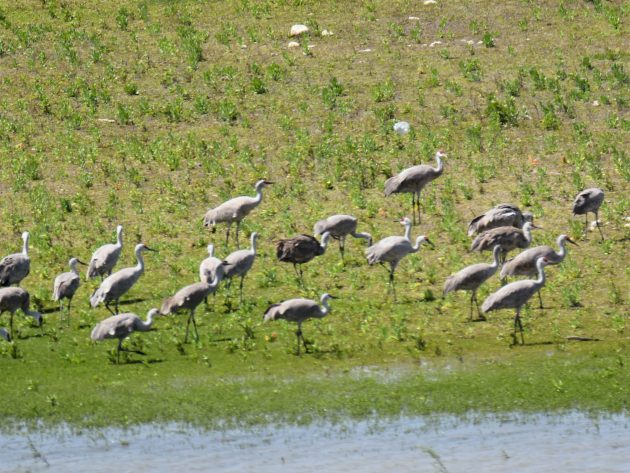
There are some picnic spots and amenities at this site, but it’s all in desperate need of repair. The toilet bowls were smashed up and broken, but had nevertheless attracted clientele… We found this at all sites we visited: there are facilities but all dilapidated and grimy. No need to linger then, adelante!
It was now well past lunch time and at around 14:00 hrs we pulled into the parking lot of Presa Sombreretillo in the Sierra Los Picachos. We unpacked the sandwiches and the telescopes – an essential piece of equipment for all sites we visited – and munched our Mexican cheese sarnies while watching Mexican Duck. Both the taste and the view were mouthwatering.
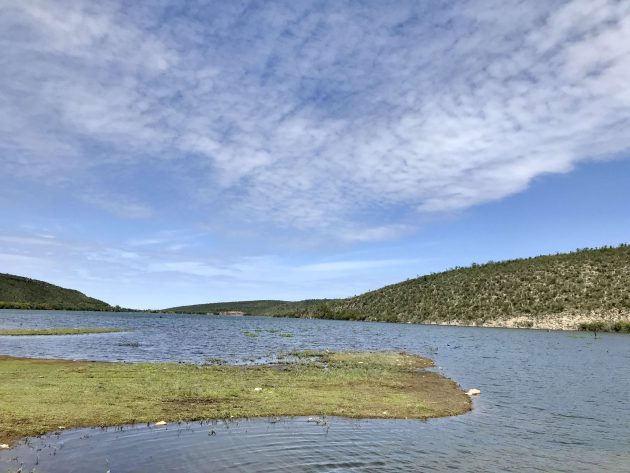
The entertainment consisted of a group of 8 Grasshopper Sparrows and Cattle Egret attending to a small herd of – wait for it – cattle. Sorry for that weak joke, but whenever an English name is accurately describing the bird I feel I need to call it out. If I were in charge, I’d change the focus of the naming debate to improve every single name. Not just the racists but the misnomers too. I know the names are a remnant of the great Anglo-Saxon tradition in natural history with its bird skins and laboratory work, but the simple and straightforward naming of e.g. Afrikaans or German bird names is refreshing. A bird that calls out its own name, wonderful. Take your pick: Eurasian Eagle Owl or just Uhu? Even the scientific name makes more sense (Bubo bubo). Apologies, I have digressed… Back to the lakeside. We saw all the duck species we had seen in the other reservoirs plus some Wood Duck, the already mentioned Mexican Duck, Eurasian/Green-winged Teal, Ring-necked Duck (another strange name – the ring is hardly visible and certainly not a defining characteristic of this duck – oh, will you just stop it!), and Black-necked Grebe (not saying anything). We further saw a single Spotted Sandpiper on the spillway and a trio of aptly-named Rock Wren.
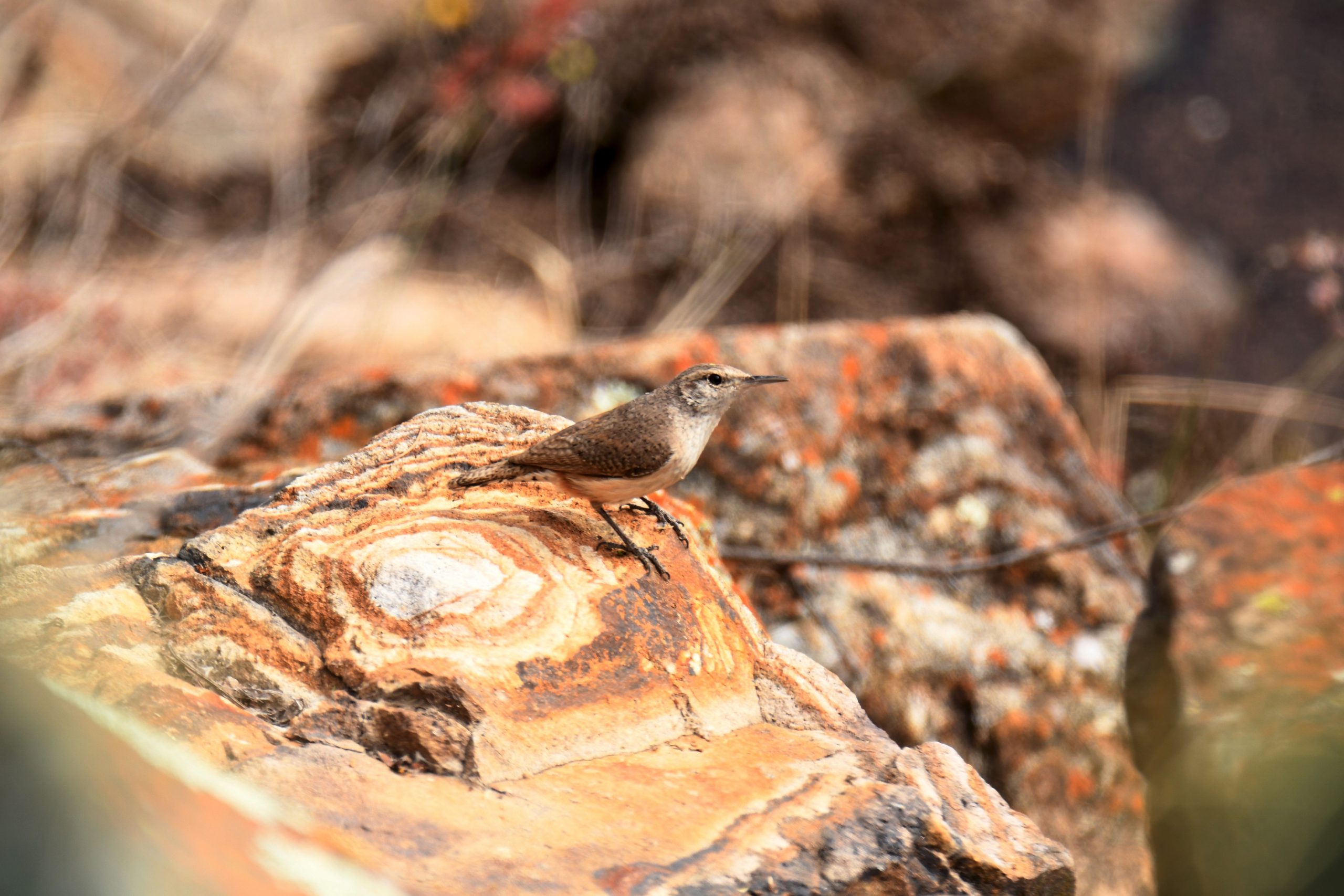
Although we didn’t explore the surrounding areas there is a lot of suitable habitat around the reservoir. Presa Sombreretillo is the most scenic of the four reservoirs we visited. There were a lot of wildflowers, dragonflies, butterflies, and succulents, so for non-birding nature lovers there’s plenty to see. It is about 90 minutes away from the city so if you have limited time this is the one to go for.
Every time I return to the city I am liking it more – there’s so much nature to enjoy in the immediate surroundings. Monterrey may be the most unlikely tourist destination in Mexico, but it is worth a visit. As a Cyberdyne Systems T-800 Model 101 once said: I’ll be back.













Oh, you are such a European, Peter. That Black-necked Grebe is called an Eared Grebe here, and I think that name is an improvement. Your Eurasian/Green-winged Teal is, obviously, just Green-winged here, as ours have never seen Eurasia. Besides, who need one more species name with the word “Eurasian” in it? (Don’t get me started, either.)
Even though I live in the same country, your two mentioned sparrows, the screech owl, and the Rock Wren would all be lifers for me. Mexico is a big country.
Paul, I follow the descriptions in eBird for the posts I write – nomenclature is confusing enough as it is… and yes, very much the European 😉